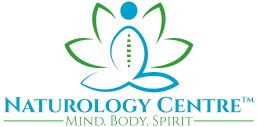Manual Therapy Can Prevent Injuries
According to a new study, customized physical therapy may be an effective approach to relieve low back pain, which affects an estimated 31 million Americans. La Trobe University researchers discovered that “many patients with low-back issues that remain beyond 6 weeks do not improve.”
Manual therapists are frequently recognized for their abilities to assist individuals in rehabilitating injuries, but did you know they may also assist you in preventing an injury from occurring?
Manual therapists are experts in the movement of the human body. They may give a unique perspective on intentional, precise, and efficient movement over a lifetime by analyzing the movement system using their mobility and locomotion skills. Based on the results of this examination, therapists can create a personalized and integrated plan of care to meet the individual’s goal-directed objectives.
So the issue is, aside from recovering injuries, what else can Manual therapists do to help you?
Be proactive in order to avoid harm!
Manual therapists may assist people in becoming more proactive by recognizing bodily imbalances and risk factors that may predispose them to injury or impair their physical performance. Injuries can be avoided by analyzing and resolving these issues. Furthermore, proactive strength and balance training can aid in the capacity to complete everyday tasks as well as participate in recreational, communal, and sporting activities.
Individuals should be prepared for surgery.
This is also known as pre-rehabilitation or “prehab.” Pre-rehabilitation has been shown in studies to benefit individuals receiving mechanical hip and knee replacements. Patients who participate in a supervised exercise programme before surgery that includes strength, range of motion, flexibility, aerobic, and balancing activities are less likely to require inpatient rehabilitation and frequently recover quicker. Prehab is an opportunity to develop a trusting connection with your physical therapist in addition to boosting the rate of good surgery results. Furthermore, it allows potential patients to ask questions about post-operative care and become acquainted with the facility and its personnel.
Encourage health, exercise, and overall well-being.
Strength, flexibility, balance, and endurance are generally the goals of this type of exercise. Many therapists use a whole-body approach to treat a patient’s specific orthopedic or neuromuscular issue and enhance their functional ability for everyday duties, jobs, and fitness/athletic activities. Some therapists further their education and skillset by becoming board-certified experts in orthopedics, women’s health, geriatrics, and cardiac rehabilitation, to mention a few. Pediatrics, athletics, electrophysiology, neurology, and cancer are some of the other physical therapy specialties.
Enhance athletic performance
Athletes who follow a sport-specific training regimen can greatly reduce their risk of injury. Another benefit of this sort of training is that it improves athletic performance. These regimens frequently include suitable warm-up activities to undertake before games and practices. They generally place a high value on correct body mechanics and sport-specific motions.
Assist in lowering the danger of falling
Manual therapists are specially educated to work with people who have a history of falling or who feel unstable on their feet. Working on specialized balancing activities and strengthening core muscles will assist to minimise the chance of falling and enhance independence.
Education and treatment of chronic pain
Manual therapists assist patients suffering from chronic pain with exercises that, in most cases, focus on increasing strength, flexibility, and endurance over the course of a graded programme. This can aid in the reduction of discomfort, the improvement of sleep, and the promotion of the capacity to participate in social, work, school, and leisure activities.
In addition, your therapist will educate you about the mechanics of “chronic” pain, how it varies from “acute” pain, and how to manage your own suffering.
Evaluation of posture and ergonomics
With today’s technology, many of us are constantly utilizing computers, phones, and tablets, and we are usually oblivious of our posture while doing so. Looking down at your phone can add up to 10 pounds of excess weight to your head and neck, causing a slew of orthopedic issues. Manual therapists can educate you on what proper posture entails and how to use it in your everyday life. They may also advise office employees on how to correctly set up their desks and individuals with more physical professions on body mechanics.
Because we only have one body, why not enlist the help of specialists in the human movement system to keep things moving? Consider it in the same way as you would your regular dental cleanings. Many individuals visit the dentist once or twice a year to avoid oral health concerns and identify possible problems. Your physical therapist may give the same sort of service by keeping you active and doing what you enjoy!

